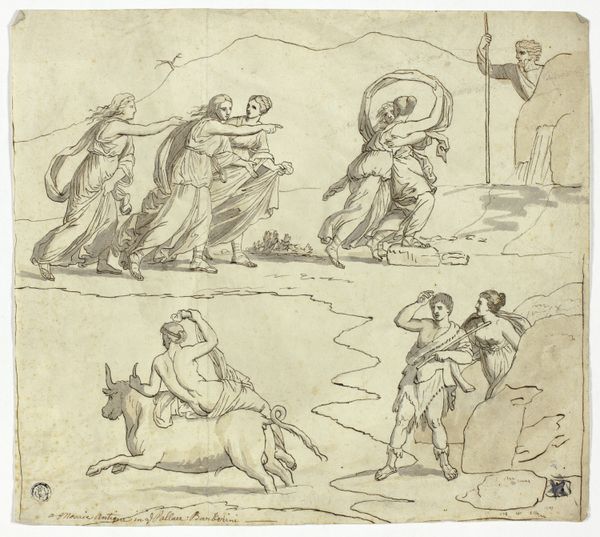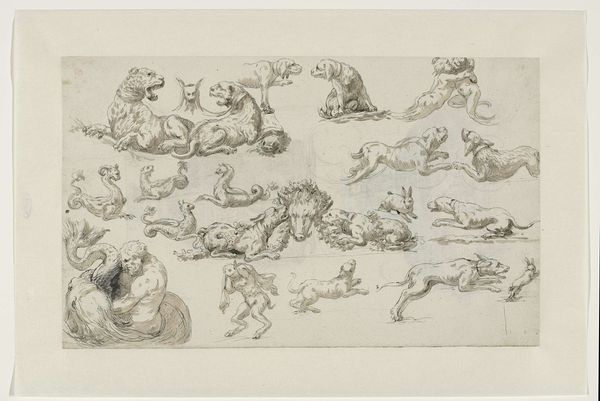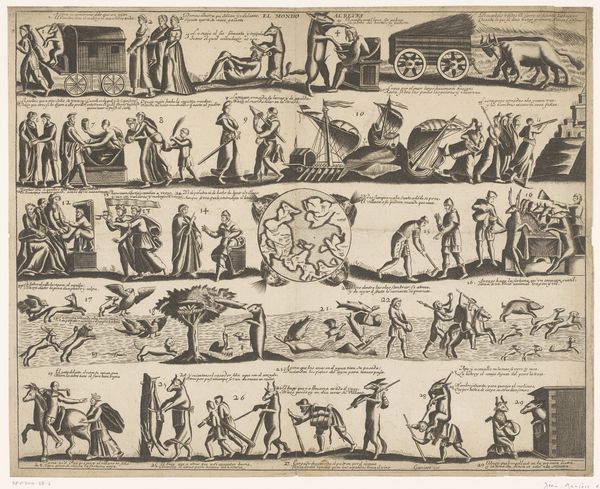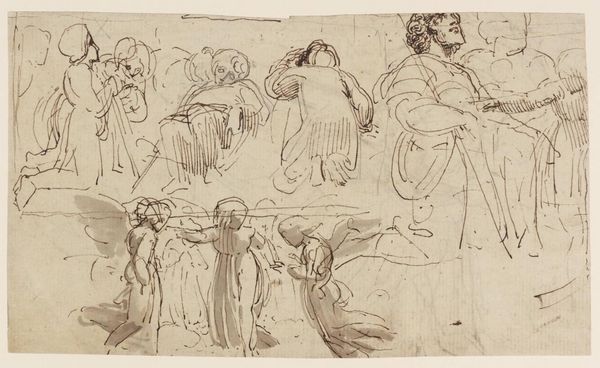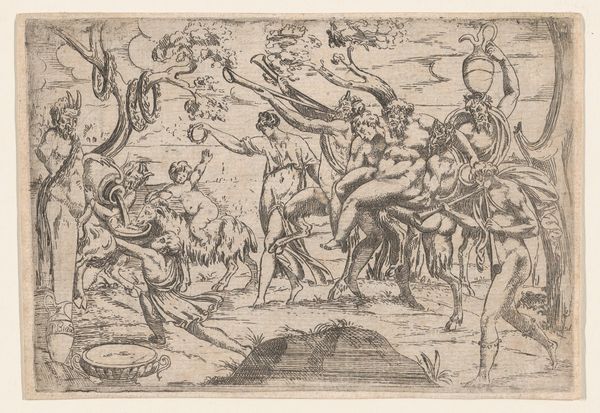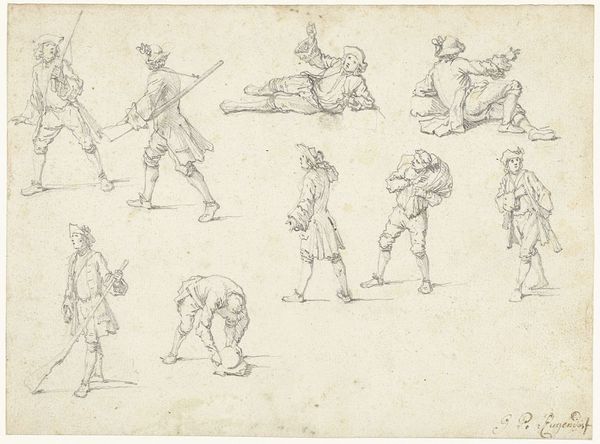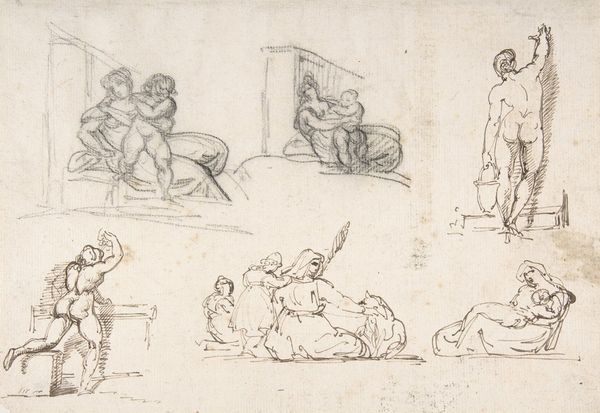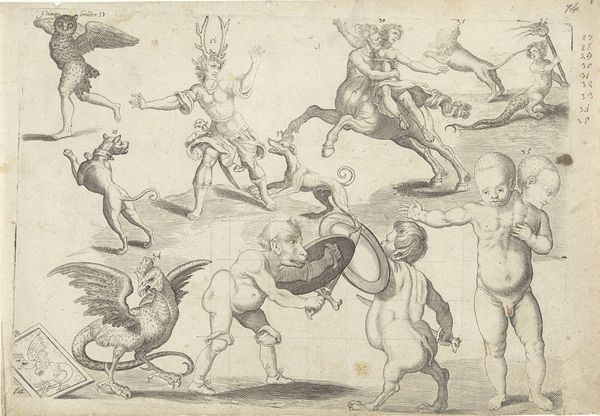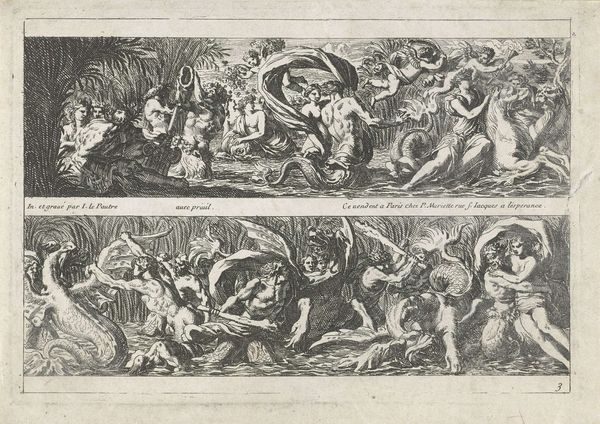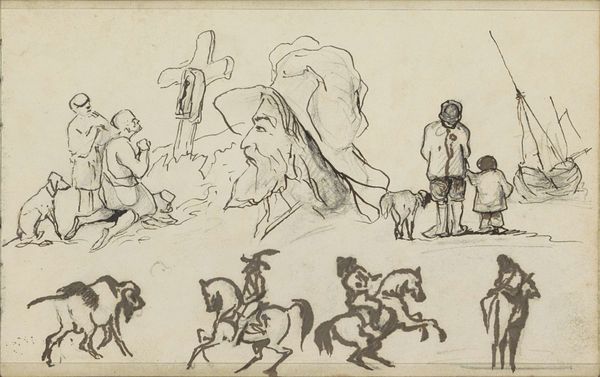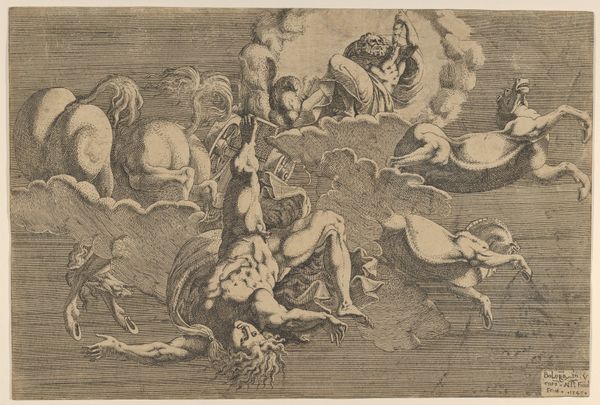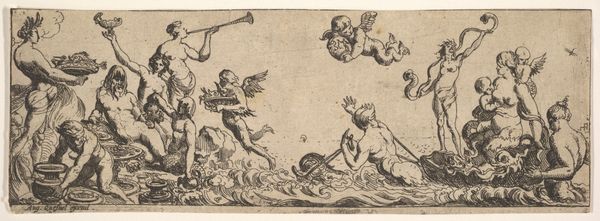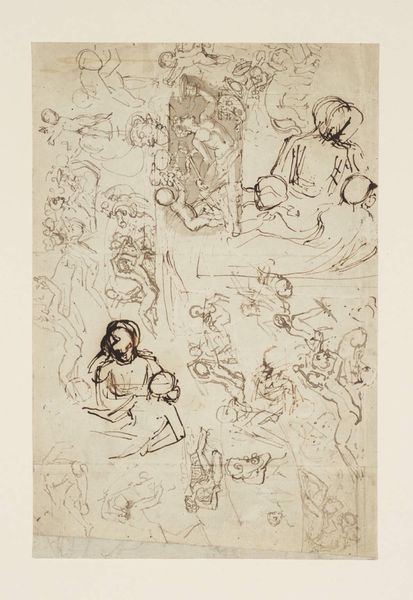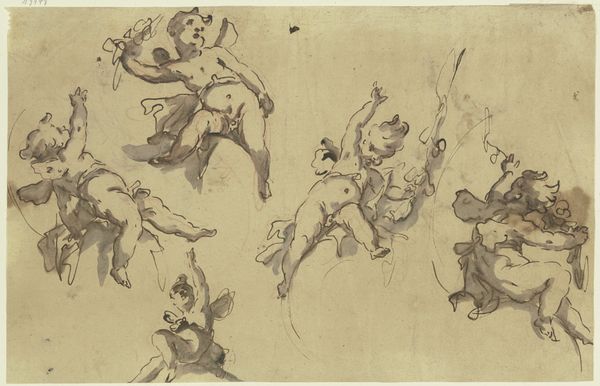
drawing, paper, ink, pen
#
drawing
#
animal
#
pen sketch
#
figuration
#
paper
#
personal sketchbook
#
ink
#
ink drawing experimentation
#
pen-ink sketch
#
sketchbook drawing
#
pen
#
genre-painting
#
northern-renaissance
#
academic-art
#
sketchbook art
Dimensions: height 149 mm, width 205 mm
Copyright: Rijks Museum: Open Domain
Curator: Look at this fascinating study sheet titled, "Studieblad met tekenvoorbeelden: figuren en dieren," or "Study Sheet with Drawing Examples: Figures and Animals" by Michael Snijders, created sometime between 1610 and 1672. It’s rendered in pen and ink on paper. Editor: Immediately, I notice the menagerie of figures – both human and animal, realistic and fantastical – crammed onto the page. There's a chaotic, almost whimsical energy here. Curator: Yes, precisely! The "sketchbook art" tag really captures the essence of this work, as it reveals Snijders in an academic context, experimenting and refining his craft. Study sheets like these were invaluable tools for artists in training and established masters alike. It’s great insight into workshops in general. Editor: The animal pairings draw my attention. Are the wolves fighting or playing? And what of the horse, prancing, with those peculiar man-like figures flanking it? Are these bestial symbols indicators of more cultural and philosophical perspectives? Curator: That's a brilliant question. Iconographically, animal combat often represented human conflict or the battle between good and evil. Horses, in particular, appear constantly in Dutch Golden Age art and embodied status. Given that Snijders lived during this very tumultuous period in European history, it’s fascinating to think of these figures not just as aesthetic exercises but as commentaries on the human condition. Editor: And the lone head at the bottom right! So classical in its rendering – what does that contrast suggest for the function of study? Curator: Indeed, the inclusion of that classical head speaks to the emphasis on imitation and adaptation in artistic training during that period. Copying the works of the masters was seen as a crucial step towards developing one's own unique style. And if the other animal/human pairings are to be taken as having symbolic importance, so too perhaps, we ought to remember the traditional philosophical association of reason with mankind and humans in general. Editor: Fascinating to consider the work as a locus of different exercises converging for the purpose of instruction but potentially giving much more! Curator: Absolutely, each character a mirror, perhaps, for the people that would study it. I see this page, this jumble of forms, and I'm seeing an artist very active and alive!
Comments
No comments
Be the first to comment and join the conversation on the ultimate creative platform.
